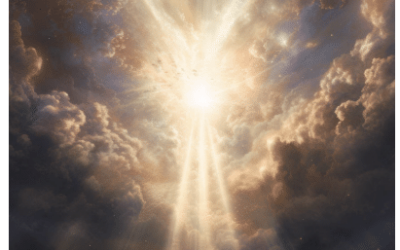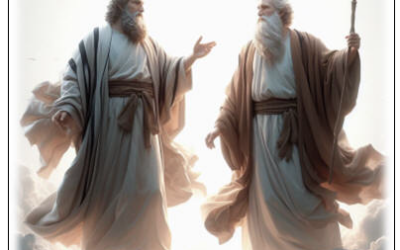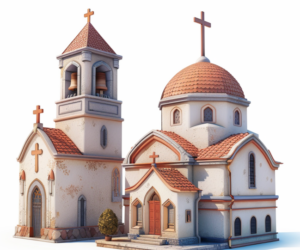The “Ancient of Days” is a figure in one of Daniel’s visions that unquestionably represents God. Daniel 7 describes a succession of kingdoms appearing as various beasts. These kingdoms are finally overthrown when the Ancient of Days sits in judgment over them on His glorious throne and gives dominion and an eternal kingdom to “one like a Son of Man” whom all peoples are to serve (or worship). This vision is a messianic prophecy in which the “Ancient of Days” specifically represents God the Father and the “one like a Son of Man” is God the Son, Jesus Christ.
Daniel 7:9-10 introduces and describes the Ancient of Days as He appears in Daniel’s vision:
“I kept looking until thrones were set up, and the Ancient of Days took His seat; His vesture was like white snow and the hair of His head like pure wool. His throne was ablaze with flames, its wheels were a burning fire. A river of fire was flowing and coming out from before Him; Thousands upon thousands were attending Him, and myriads upon myriads were standing before Him; The court sat, and the books were opened,” (Daniel 7:9-10)
A few verses later the passage goes on to explain:
“I kept looking in the night visions, and behold, with the clouds of heaven One like a Son of Man was coming, and He came up to the Ancient of Days and was presented before Him. and to Him was given dominion, glory and a kingdom, that all the peoples, nations and men of every language might serve Him. His dominion is an everlasting dominion which will not pass away; And His kingdom is one which will not be destroyed,” (Daniel 7:13-14)
This scene is closely paralleled by the one described in more lengthy detail in the Book of Revelation (particularly beginning in Chapters 4-5 and progressing through the rest of the book). There, the Lord is seated gloriously on His throne and is approached by the Lamb who opens a scroll from the Lord’s hand and receives the nations as His inheritance. A beast representing a wicked human kingdom is overthrown, and the Lamb rules over all the earth and shares the very throne of God. In the Gospels, Jesus is also frequently called the “Son of Man,” sometimes with direct reference to Daniel 7 and “coming on the clouds.” This certainly seems to indicate that the New Testament understanding of this passage is that the Ancient of Days is specifically God the Father and that the Son of Man is God the Son.
The earliest Christian writings outside the Bible also frequently point to this interpretation.1 Even the Jewish apocryphal “Book of Enoch,” borrowing from Daniel, describes the “Son of Man” as an eternal, divine figure who is given the Messianic Kingdom by the “Head of Days,” (who is obviously parallel to Daniel’s “Ancient of Days”). While this book is completely apocryphal and carries no authority, it does show us that at least some Jews reading Daniel 7 understood that both the “Ancient of Days” and the “Son of Man” must be divine figures worthy of universal worship, yet without violating biblical monotheism. The Christian understanding of this passage fully answers this conundrum in the doctrine of the Trinity and the incarnation of God the Son.
References
| 1↑ | For examples of this, see Justin Martyr’s “Dialogue with Trypho”, Chapters 31-32 (mid 2nd century), Lactantius’ “Divine Institutes”, Chapter 47 (late 3rd/early 4th century) and Augustine’s “On the Trinity” Book 2, Chapter 18 and also in his “City of God”, Book 18: Chapter 34 (early 5th century). |
|---|






